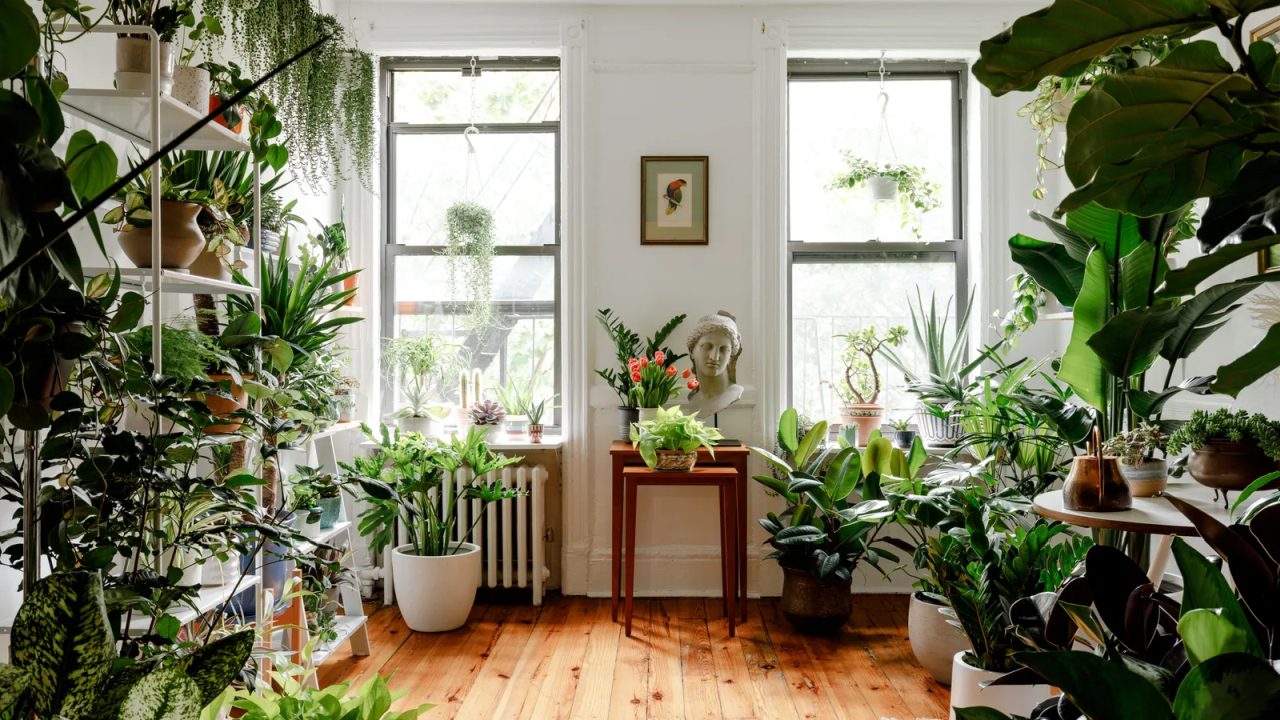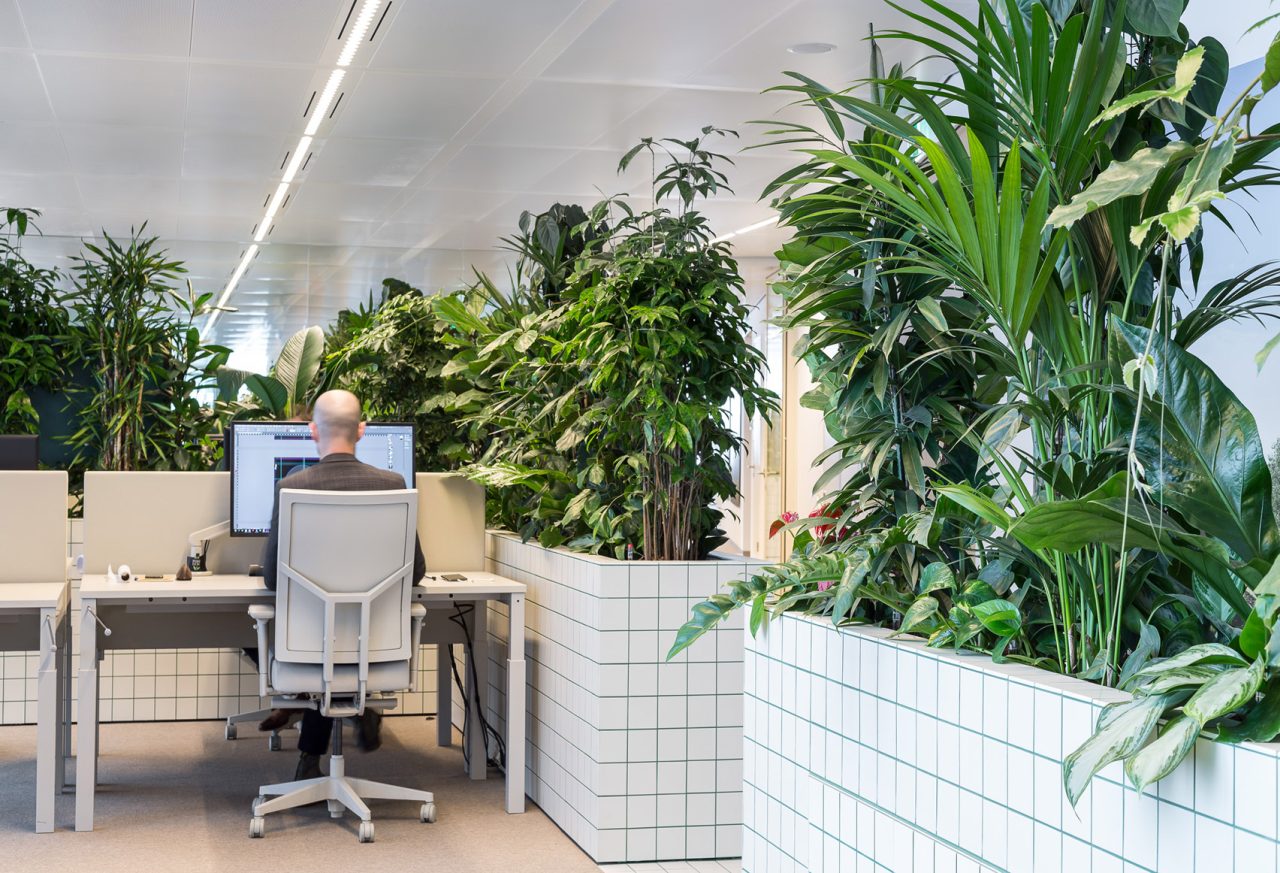Harmonizing With the Natural World Through Green Living Spaces
Discover benefits and tips to create biophilic design in homes and offices
The natural world has taken center stage in recent years as more people have sought to bring nature indoors and revamp outdoor living spaces. Who could blame them? Waking up to sunlight beaming through your bedroom window is a far better mood booster than coffee or energy drinks. Meanwhile, plants can induce calm and tranquility in the most stressful offices, increasing efficiency and harmony.
Ultimately, a green living space connects you to the earth, encouraging a healthier lifestyle and enjoyment in your surroundings. Here’s a closer look at green spaces, their benefits, and how to create them in residential and commercial areas.
What Is Green Living Space?
A green living space integrates nature with the interior of a home or workplace. It’s about utilizing functionality, sustainability, and biophilic design elements like the following:
- Greenery: Indoor plants, vertical gardens, potted herbs, hanging plants and landscaping
- Natural materials: Bamboo, reclaimed wood, and stone to be used in flooring, countertops, and furniture
- Water features: Ponds, fountains, bird baths and aquariums
- Natural light: Wide window panes and skylights allow ample sunlight into the interiors
Green spaces could also occur outside, through the integration of a backyard or park. Commercial developers might design outdoor areas where employees can deepen their connection to nature and immerse themselves in a more restorative, liveable environment. At home, focusing on redesigning gardens, increasing vegetation, and implementing water features are popular for outdoor arrangements.

Image: Mark Burkhalter
The Benefits of Green Spaces
Experts have long touted the advantages of green living spaces and with good reason. Exposure to nature aids your mental, physical, and emotional health. Here are specific ways in which including green elements in residential and commercial environments can benefit you.
Better Physical Health
In a review of several studies on nature’s impact on people, 83.3 percent showed positive physical health outcomes, including increased activity and lower risk of cardiovascular disease. 80 percent of the studies showed a decrease in heart rate.
Additionally, green living spaces help improve air quality by reducing particulate matter indoors and outdoors, assisting those with asthma or other respiratory conditions. This effect is significant, especially in urban areas with greater air pollution.
Improved Mental Health
Did you ever go on a walk to clear your head after a busy day? Perhaps you noticed the positive effect nature has on your mood. Just a few hours of natural sunlight every can boost vitamin D and improve your mental health.
Researchers even found green spaces to affect employees’ mental well-being and morale positively. Implementing greenery in office spaces, exposure to natural elements, and physical activity in the natural world — such as taking walks outside during breaks — all benefit mental health and enhance efficiency.
Enhanced Cognition and Sleep Quality
Poor sleep quality puts you at risk for depression, anxiety, cardiovascular issues, and metabolic conditions. However, green living spaces can improve your sleep by reducing traffic noise, high temperatures, and ambient pollution in large cities.
It can also enhance cognition by alleviating chronic stress, which helps restore sleep quality and concentration. Incorporating greenery into your living space is ideal if you want a better night’s sleep and to feel sharp in the morning.
Greater Creativity
Attention fatigue is likely to occur between home and work responsibilities. You put a lot of wear on your mind, whether following a daily workflow or keeping track of a busy calendar. Exposure to nature has excellent therapeutic benefits to inspire and encourage creativity. Nature stimulates a wandering mind, creating an escape from the everyday routine. Shifting your focus to landscapes, sounds, and sensations from nature captures your attention and enhances your ability to develop ideas, problem-solve, and find inspiration.
In work environments, boosted creativity from nature is essential for increasing productivity and innovation. Studies indicate biodiversity — including flower color, species, and richness — enhances aesthetics and promotes creative thinking.

Image: Peter Tijhuis
Lower Environmental Impact
Green spaces help mitigate urban heat islands by cooling excessive temperatures. An urban heat island is a city reaching temperatures 2–4 degrees Fahrenheit warmer than surrounding areas. Some cities see rises as high as 27 degrees Fahrenheit. Likewise, infrastructure takes up much natural habitat for local wildlife. By implementing green spaces into residential and commercial structures, you can significantly reduce your environmental footprint and promote a healthier, safer environment for all living beings.
Inside, you can harmonize with nature by reducing energy consumption. Greenery can ensure more comfortable indoor air to avoid running the air conditioner all the time. With more natural light, you also won’t need to keep the lights on for long durations. Hence, decreasing your carbon footprint.
Employee Well-Being
Nature exposure and green living spaces positively influence employee morale and well-being. Studies have shown using natural elements in the workplace reduces stress, and improves attention and alertness.
Adding plants and large windows with sweeping views and natural light creates a vibrant and safe working environment. Collaborating with teams outside or walking and talking through a green space also demonstrates better work outcomes.
Embracing Green Living Space at Home and Work
Trees are an obvious choice for creating green living spaces. However, you can do so much more to harmonize with nature. Here are some ideas you can use to design your green living spaces at home and in the office.
Commercial Green Living Space
Developers can incorporate more of the natural world into commercial spaces by planning a corporate park with lush greenery or including big windows to bring in more natural light. If there is little room around the building for a park, a rooftop garden or terrace will suffice.
Green spaces allow workers to come together, brainstorm ideas more effectively, and problem-solve collaboratively. Consider ways to shelter people from the elements — such as with awnings and pergolas — and draw up sensory-inducing walking paths and tables for working outside.
Inside the workplace, floor-to-ceiling windows, plants, and reclaimed wood furniture are crucial to the office’s biophilic design. Some commercial buildings have living walls for enhanced aesthetics and fresh produce you can eat. Offices can also optimize buildings for energy efficiency — like LED lighting, a programmable thermostat, and insulation — to boost their sustainability and safety.
Residential Green Living Space
Hanging or potted plants and windowsill herb gardens are cornerstones of indoor greenery in households. You can improve your home’s comfort and livability by including plants in your green design. Outdoors, it’s best to use native plants and small ponds to restore habitat for local species.
A patio or enclosed sunroom is another excellent place to create green living space. Include natural elements such as wood furniture, natural fiber rugs, and nature-inspired color palettes like soft sage and neutrals. A comfortable seating arrangement will enable you to spend all your time outside or in an interior room with an outdoor aesthetic.
Moreover, allowing natural light to enter your home will have some of the most significant effects on your mood. Install large windows, glass doors, and skylights to allow as much light in as possible. Removing heavy panel curtains for lightweight sheer ones will let in more sunshine.
Creating a green living space is easier than you think. Start with plants, then work your way to incorporating other natural elements. You’ll soon discover living in green spaces helps you feel your best in your surroundings.


